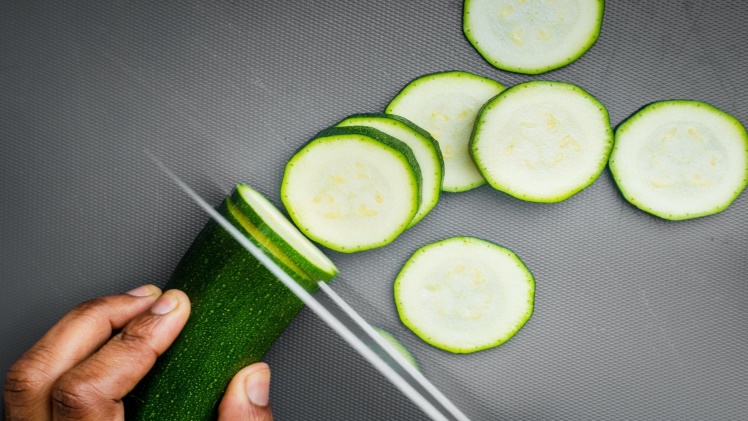In 2021, our only choice is to stay at home to protect our family and ourselves from the COVID-19. For months, you have probably seen countless trends circle the Internet, such as Dalgona coffee, people improving their lifestyle, rediscovering gardening, and many more.
Gardening has many benefits that can contribute to your health. It is one of the healthiest hobbies because it can reduce stress levels, build your strength, boost your mood, improve memory, and get you Vitamin D from the sun.
Additionally, planting edible plants has numerous benefits. It is more nutritious, and you can save more money, better for the environment, etc. Imagine this, you’ve already started cooking your meal for the day, and you realize that you forgot an ingredient. Isn’t it laborious to go to a store to buy that ingredient when you can pick it right from your backyard? Below are five plants to get you started with your garden:
1. Cucumbers (Cucumis sativus)
Cucumber’s color ranges from orange, white, green, and yellow. It usually contains seeds, and it has dark green skin with green stripes and a rough surface. A regular cucumber ranges from 15 to 25 centimeters in length, and it’s usually cylindrical.
When you have the time, plant some cucumbers in your garden. Ensure that you give your plant an inch of water weekly. Touch the soil and when you feel that it’s warm, add a layer of straw mulch to keep it clean and away from beetles and slugs. Additionally, regularly feel them water-soluble plant food to enjoy an ideally grown cucumber.
If you want to learn more about taking care of your cucumbers in great detail, visit websites like Gardener’s Path for clear guidance in your journey as a gardener!
An interesting fact about cucumbers is they’re a fruit, not a vegetable. It’s often added in salads, and it’s an excellent source for the vitamins you need, which are Vitamins B1, B2, B3, B5. B6, C, and many more!
2. Radishes (Raphanus sativus)
These plants are root vegetables, and it resembles turnips or beets in texture and appearance. Still, it differentiates between them by its flavor. It has white flesh and a mild taste. Radishes can grow up to three feet long, and they can weigh up to 100 pounds, although farmers usually harvest them when it’s at one to five pounds in weight.
Be sure that you don’t crowd your plants, or else they won’t grow well. The key to a good harvest is moist soil but ensure that it’s not waterlogged to enjoy its antioxidants properties. Additionally, it has minerals like potassium and calcium. Together with its antioxidant properties, it can help lower blood pressure reducing the risks of heart disease.
3. Tomatoes (Solanum lycopersicum)
Tomatoes are known for their red or scarlet color, but there are also variations of green and purple. It varies in shape from spherical, oval, elongated, to pear-shaped. Even though they can take in different forms and colors, all of these tomatoes have tiny seeds that surround a jellylike pulp in their interior.
When caring for tomatoes, ensure that you use all safety measures in protecting your plant from pests and other harmful diseases so that you enjoy a good harvest. After harvesting tomatoes, you can use it in salads, along with cucumbers and bell peppers. Also, you can place tomatoes in a blender and use that for spaghetti along with different ingredients.
4. Bell Peppers (Capsicum annuum)
Bell peppers can also be called sweet peppers. It’s the Christmas ornament of the vegetable world because it can take on different colors from brown, black, purple, red, green, yellow, and orange. It has a beautiful shape, and when you bite it, you can enjoy a slightly watery crunch.
Keep your plant well-watered but ensure that the soil isn’t soggy. It should be about six inches deep. As mentioned above, you can add bell peppers to your salads, but you can also place them in hearty meals to add color and taste to them. You can even eat sweet peppers by themselves because of their unique flavor.
5. Kale (Brassica oleracea var. sabellica)
These plants produce elongated leaves with frilled or wavy margins. Depending on the variety, it has a wide range of colors from light green, blue-green, purple, or red. In seasons where you can grow long kales, the stem can reach a height of 60 centimeters or more.
Kale is considered one of the great sources of Vitamin K, which is required for building healthy bones and blood clotting. Consuming these plants can lower your cholesterol and reduce the risk of heart diseases.
Takeaway
Now that you’ve read all about the five plants above, deciding on what plant to get you started in your garden has never been easier! You can get benefits from gardening and your harvest! Take the first step in creating your garden because there are little to no negative implications in reality.

